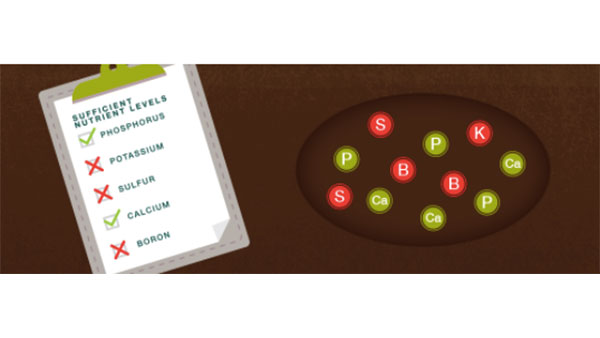Fertilizer: Beyond The Demand Recovery
Outstanding demand prospects are the dominant feature of the crop nutrient outlook this year. The latest statistics from the International Fertilizer Industry Association (IFA) indicate that global nutrient use not only has recovered from the large decline two years ago but now is solidly on a new growth trajectory. For example, global nitrogen (N), phosphate (P2O5) and potash (K2O) use is projected to increase to a record 178.3 million tonnes in 2011, up 4% or 6.6 million tonnes from last year. Projected demand this year is 6% or 10.0 million tonnes greater than the peak in 2007 and it is up 14% or 22.3 million tonnes from the low level of 2008.
Global nitrogen use is forecast to increase to 107.2 million tonnes N in 2011, up 3% or 2.8 million tonnes from last year and up 6% or 6.5 million tonnes from 2007. The increase since 2007 is the equivalent of eight world scale nitrogen facilities. Global phosphate use is projected to increase to 41.7 million tonnes P2O5 this year, up 5% or 1.9 million tonnes from last year and up 8% or 3.2 million tonnes from the high level of 2007. Demand growth since 2007 is the equivalent of more than two Ma’aden plants (Ma’aden is a large project in Saudi Arabia that now is expected to come online during the last half of 2011 or in early 2012). World potash use is projected to climb to 29.4 million tonnes this year, up 1% or 400,000 tonnes K2O from the previous record set in 2007.
These demand forecasts are underpinned by high prices for a wide array of agricultural commodities and highly profitable farm economics worldwide. For example, prices for 2011 new crop corn, soybeans and hard red winter wheat were trading in the $5.85, $13.40 and $9.20 per bushel range in late January. We estimate that if a Midwest farmer sold his 2011 corn and soybean crops and bought crop nutrients and other inputs at current spot prices, returns over variable cost would total about $575 per acre for corn and about $500 per acre for soybeans. Those estimates are not too far behind the record levels of 2007.
This is not just a corn, wheat and soybean story, however. Prices for most other agricultural commodities also are trading at high levels. Fruit and vegetable price increases are fueling inflation in many countries including China and India. The price of sugar today is roughly three times the level three years ago and the price of cotton is about double its value three years ago and the highest since the Civil War. We expect stiff competition between commodities for acreage in the US this spring. For example, unlike three years ago, corn will have to pay up if it is to bid area away from cotton this spring.
In the US, we project that crop nutrient use will climb 10% in 2010/11 and rival the previous high marks set in 2003/04 and in 2006/07. Nitrogen use is forecast to increase 3% to about 13.0 million tons N or within spitting distance of the previous record of 13.2 million tons in 2006/07 when US farmers planted almost 94 million acres of corn. Phosphate use is projected to increase 11% to 4.6 million tons P2O5 also in line with the high level of 2006/07 and up 1.1 million tons P2O5 or the equivalent of almost 2.4 million tons of DAP from the sharp drop in 2008/09. Potash use is forecast to jump 32% to 5.1 million tons this year, also in line with the high level of 2006/07. These forecasts are based on the assumptions that US farmers will plant 92 to 93 million acres of corn, 78 to 79 acres of soybeans and 57 to 58 million acres of all wheat and that total area planted to the 21 principle crops will climb to about 325 million acres, up 10 million acres from last year but in line with the total in 2008. These forecasts also assume that application rates will exceed 10-year averages by modest amounts.
Factors Affecting Price
There are several factors that could move crop nutrient prices up or down from current levels. The most important is agricultural commodity prices. The robust nutrient demand outlook is underpinned by high crop prices today. High prices no doubt reflect increasingly tight fundamentals.
For example, according to the latest USDA estimates, US corn stocks at the end of the 2010/11 crop year are projected to drop to just 5.5% of use, the second lowest since 1970. US soybean stocks are forecast to drop to only 4.2% by the end of this crop year, the lowest percentage since 1970. As a result, grain and oilseed prices are expected to remain hyper-sensitive to weather developments or demand surprises and thus remain highly volatile.
Tight fundamentals and impressive price rallies have attracted speculative interest in soft commodities. In the case of corn, wheat and soybeans, the net long positions of index funds and large speculators today exceed the long positions held during the run-up in commodity prices three years ago. Fundamentals no doubt are constructive, but there remains a lingering concern about what could “spook the speculative herd” and cause a stampede toward the exits.
On the supply side, there is less cost push pressure in crop nutrient markets today than during the spike in crop nutrient prices three years ago. In the case of nitrogen, US natural gas prices are roughly one-half the levels three years ago thanks in large part to the growth of shale gas production as well as a tepid recovery in industrial gas demand. In the case of phosphate, sulphur and ammonia markets are tight and prices are at high levels today, but we do not expect that these costs will spike to the peaks of 2008 when spot sulphur delivered to key Asian destinations rocketed to $855 tonne and ammonia delivered to Tampa shot up to $931 per tonne.
Other uncertainties overhang crop nutrient markets – especially the phosphate market. How will the Indian subsidy issue play out in 2011/12? How much phosphate will China export in 2011? When will the large Ma’aden facility finally start up and how well will it operate? How will Mosaic’s South Fort Meade mine permit issue get resolved? Will current prices destroy crop nutrient demand?
Finally, sentiment today is cautious compared to euphoric during the last run-up in agricultural commodity prices three years ago — everyone has been to this rodeo once before. As a consequence, crop nutrient inventories today are relatively low in most countries at production points, throughout the distribution pipeline and in farm fields. That will make meeting projected record demand all the more challenging in the months ahead.






